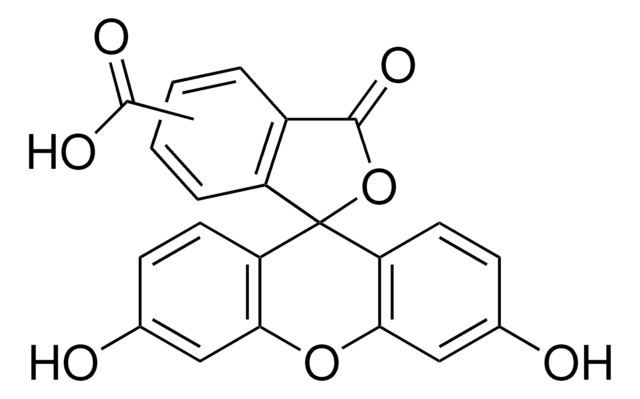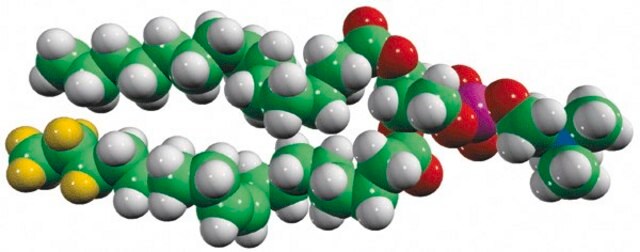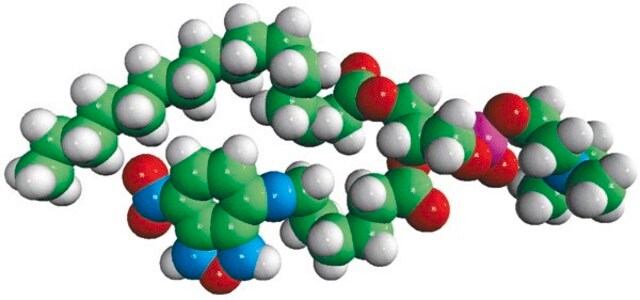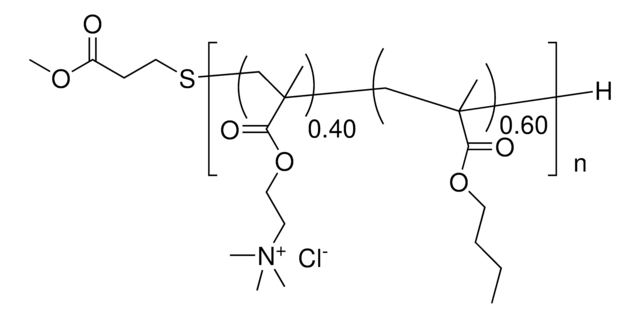857228P
Avanti
C18 LPA
1-O-octadecyl-2-hydroxy-sn-glycero-3-phosphate (ammonium salt), powder
Sinónimos:
1-octadecyl-sn-glycero-3-phosphate (ammonium salt); PA(18:0e/0:0)
About This Item
Productos recomendados
Análisis
>99% (LPA; may contain up to 10% of the 2-LPA isomer)
formulario
powder
envase
pkg of 1 × 1 mg (857228P-1mg)
fabricante / nombre comercial
Avanti Research™ - A Croda Brand 857228P
tipo de lípido
phospholipids
cardiolipins
Condiciones de envío
dry ice
temp. de almacenamiento
−20°C
cadena SMILES
O[C@](COP([O-])(O)=O)([H])COCCCCCCCCCCCCCCCCCC.[NH4+]
Descripción general
Aplicación
- to study its effects on Yes-associated protein (YAP) phosphorylation
- as a standard for the quantification of lysophosphatidic acid (LPA) compounds in proton samples using reversed-phase ultra-performance liquid chromatography-tandem mass spectrometer (UPLC-MS/MS)
- as a substrate to investigate the phosphatase activity of soluble epoxide hydrolase (sEH) towards LPA compounds
Acciones bioquímicas o fisiológicas
Envase
Información legal
Código de clase de almacenamiento
11 - Combustible Solids
Clase de riesgo para el agua (WGK)
WGK 3
Certificados de análisis (COA)
Busque Certificados de análisis (COA) introduciendo el número de lote del producto. Los números de lote se encuentran en la etiqueta del producto después de las palabras «Lot» o «Batch»
¿Ya tiene este producto?
Encuentre la documentación para los productos que ha comprado recientemente en la Biblioteca de documentos.
Nuestro equipo de científicos tiene experiencia en todas las áreas de investigación: Ciencias de la vida, Ciencia de los materiales, Síntesis química, Cromatografía, Analítica y muchas otras.
Póngase en contacto con el Servicio técnico








